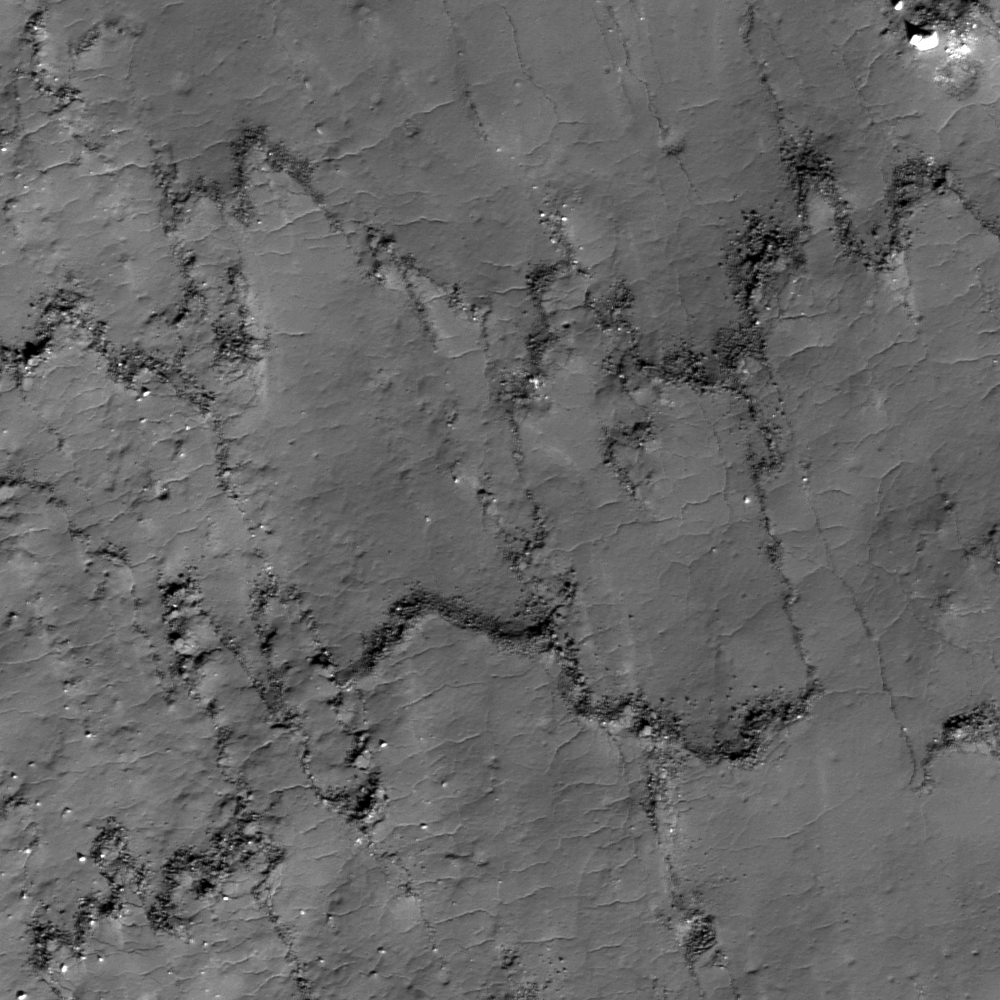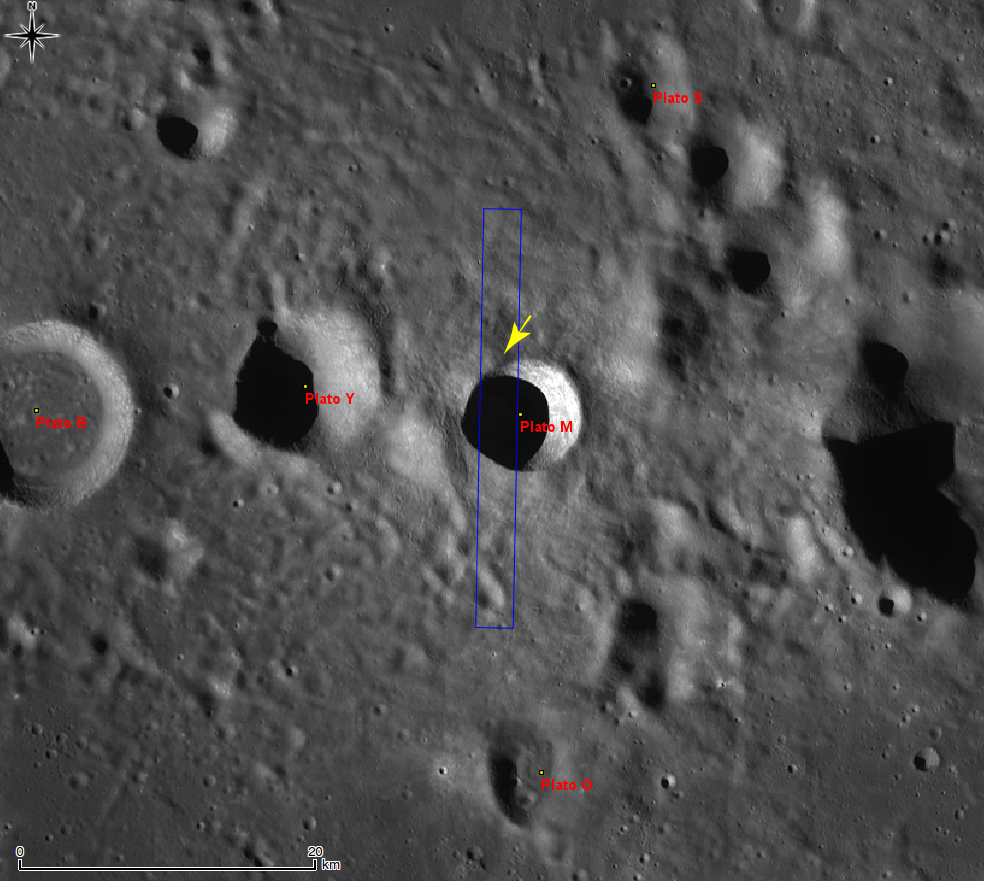
Today's Featured Image highlights a portion of an ejecta deposit about 1.73 km north from the crater rim of Plato M (7.92 km diameter, located on the north edge of Mare Imbrium).
The texture of the smooth surface and polygonal cracks in this image are the typical characteristics of impact melt (e.g. Herigonius K Impact Melt Flow, Impact melt channel, An Impact Melt Veneer in the Highlands). Irregular lines consist of rubble piles that bring the edges of each flow unit into sharp relief. In many cases, the impact melt formed parallel, long tongue-like lobes with a rounded distal edge when it flowed down the slopes formed by the crater's ejecta blanket (e.g. Look at that flow!, Forked Impact Melt Flows at Farside Crater, Outside of Giordano Bruno). But the flow features in this image show short and wide flow units with an irregular distal shape.
Perhaps a large amount of impact melt was splashed on the ground and flowed only a short distance at relativey high velocity? New high resolution topographic data from the NAC are helping scientists address hypotheses like this one! The large variation of impact melt morphologies seen all over the lunar surface allows us to improve our knowledge of impact cratering processes.
Explore the spectacular flow features around Plato M full NAC frame yourself! You may find many more intriguing forms!
Related posts:
Out of the Shadows: Impact Melt Flow at Byrgius A Crater, Impact melt at Necho crater, Rootless impact melt flows, Splash and flow
Published by Hiroyuki Sato on 19 April 2012
